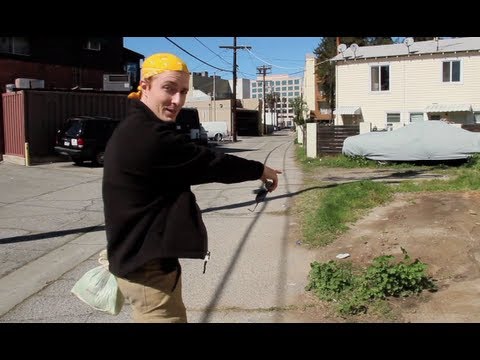Now is a good time to start learning about urban foraging. It’s a great time of year to watch things grow and ripen. You’d be surprised how many fruit trees there are, how many edible greens, herbs, nuts and mushrooms can be found in cities. Of course, permissions and toxicity (fumes, chemicals, pee, and dog poop) are all something to consider when foraging – but let’s face it this is a skill we one had and lost and it wouldn’t do us any harm to open our eyes and learn more about the free food and natural remedy opportunities around us.
First, look at this map. Falling Fruit is a massive, collaborative map of the urban harvest. By uniting the efforts of foragers, freegans, and foresters everywhere, the map already points to over a half million food sources around the world (from plants and fungi to water wells and dumpsters). Our rapidly growing user community is actively exploring, editing, and adding to the map. I clicked and discovered a neighbor allows people to pick her pears if they ask first.
When harvesting aquatic plants, cook them and avoid contracting Giardia, an intestinal parasite that causes cramps, vomiting, and watery diarrhea. And wash everything!
Some plants you might find that are edible and pack a big nutritional punch!
Acorns (leach them first)
Plantain
Conifer Needles (new growth)
Cattails (we covered these here)
Sumac (Red flowers not the white poisonous variety)
Juniper Berries (I have a ton of these in the yard and will be cooking pheasant with them later in the Fall)
Black Walnuts
Wild Mint (for tea)
Chickweed
Stinging Nettle
Wild Lettuce – edible and a painkiller
Wild Onion
Persimmon
Wood Sorrel (in moderation)
Mallow
Hedge Mustard
Dandelion – all of it!
Black Cherry
Fireweed
Blackberries
Rosehips (Boil in water & strain to get Vit-C rich syrup)
Wild Grape (Muscadine)
Fennel (smells like licorice. Don’t confuse with Giant Hogweed which also has lacy flowers)
Clover – all of it!
